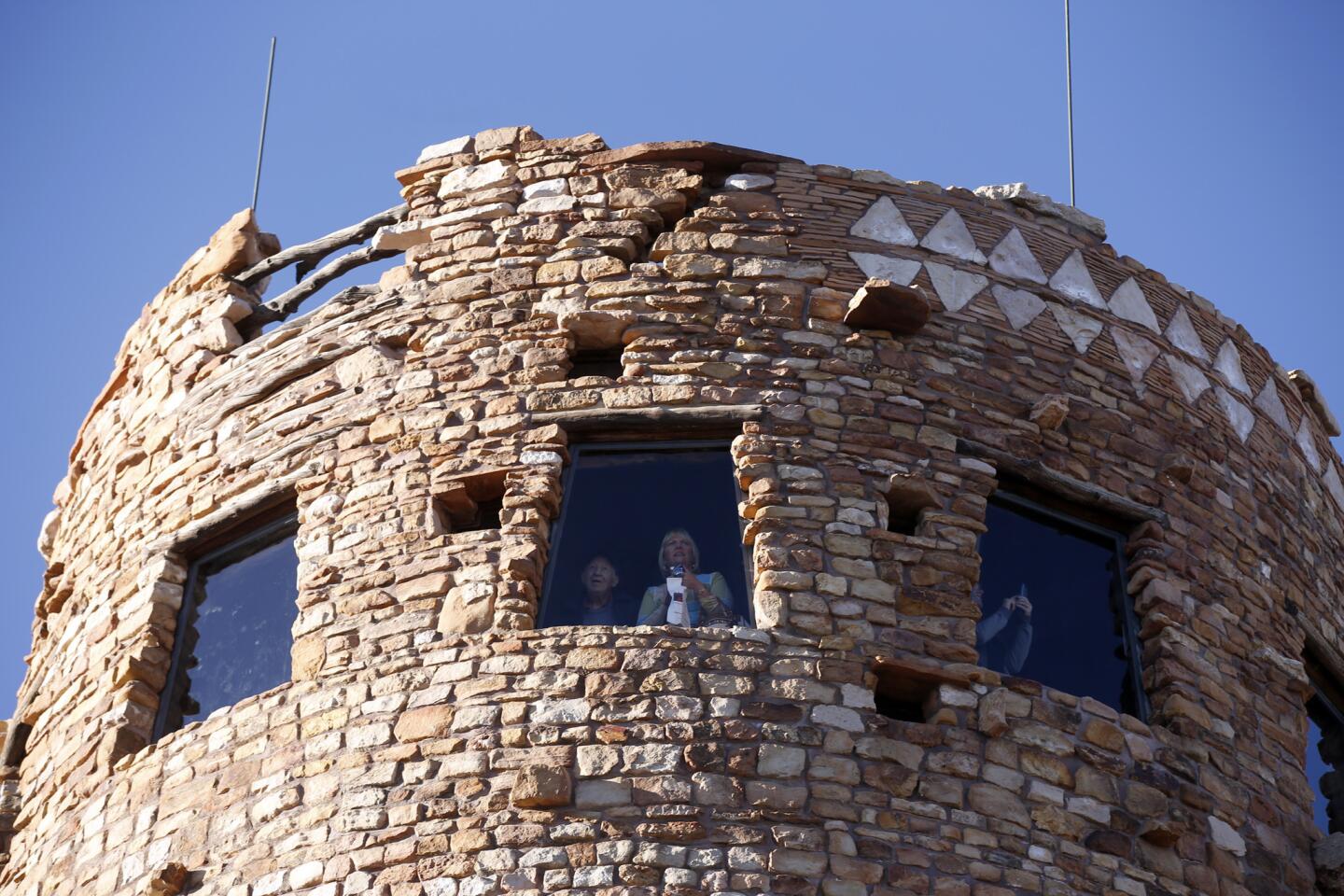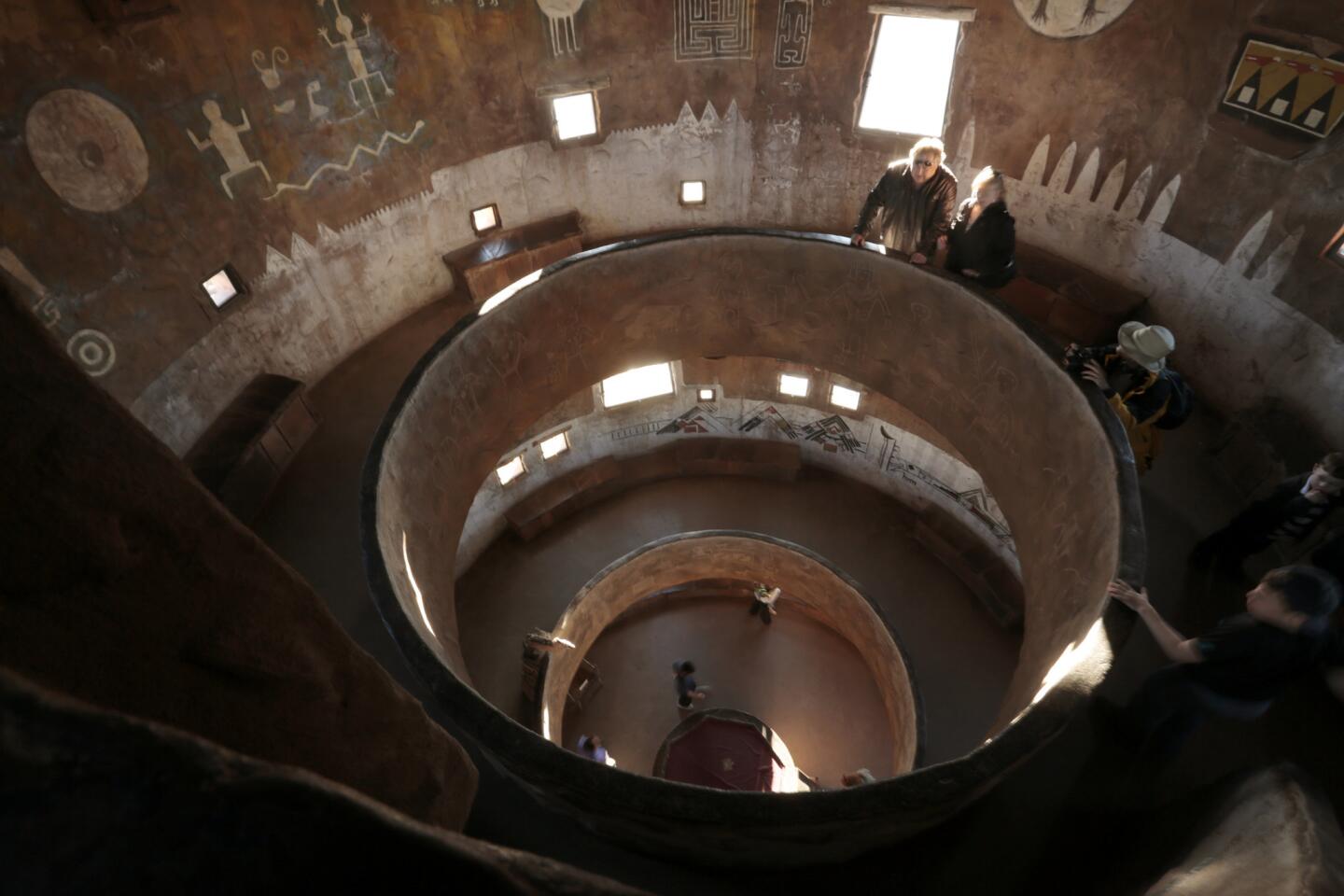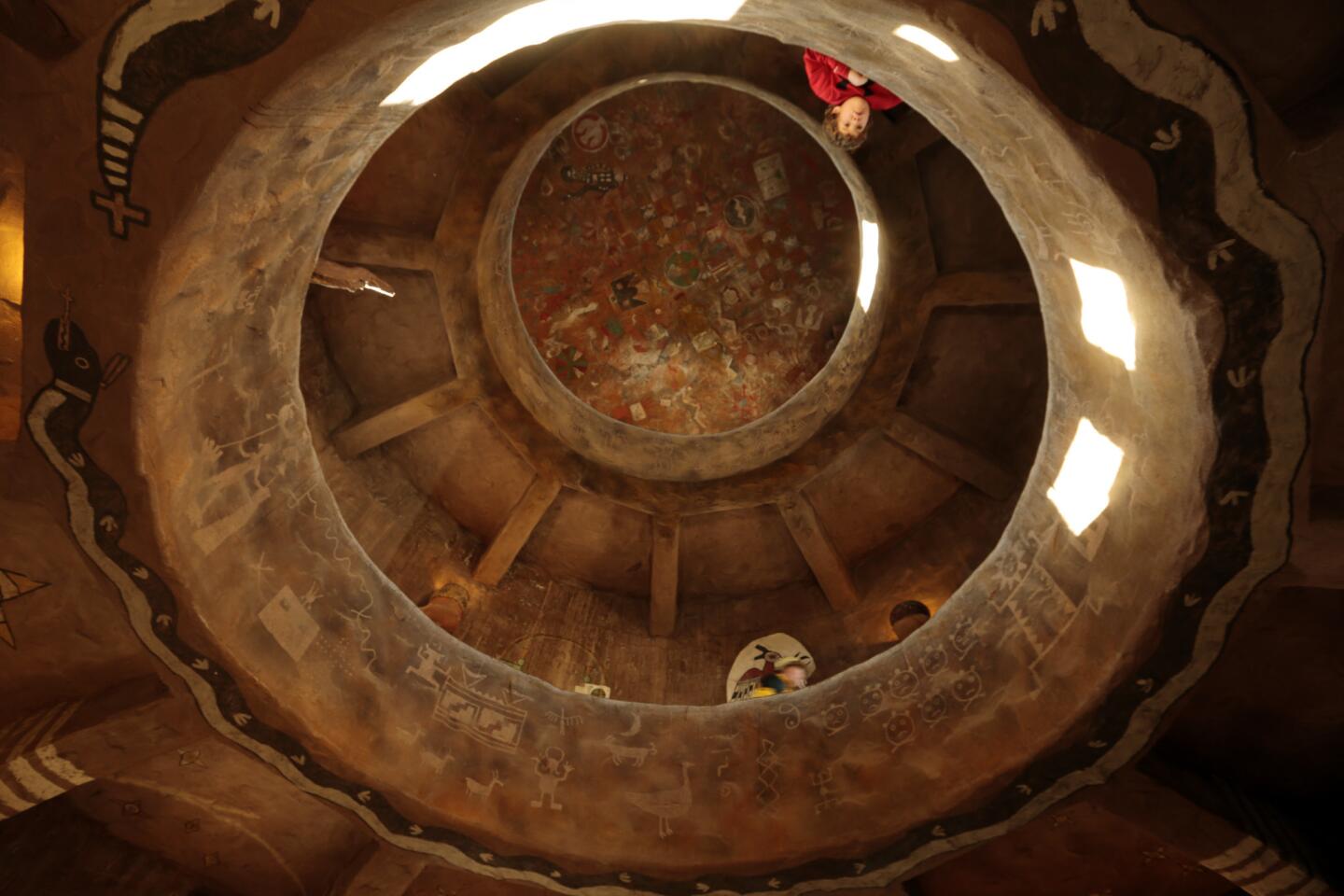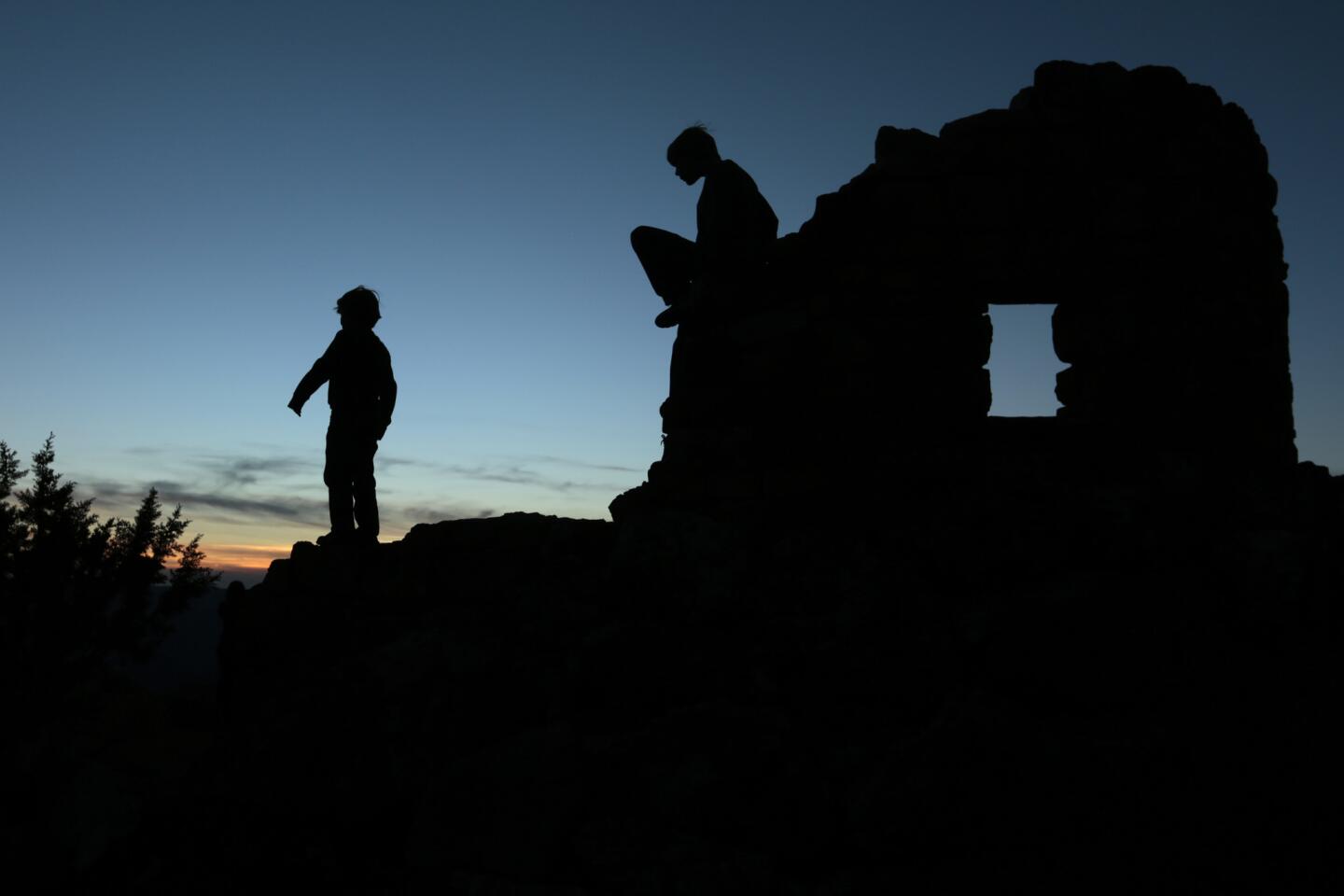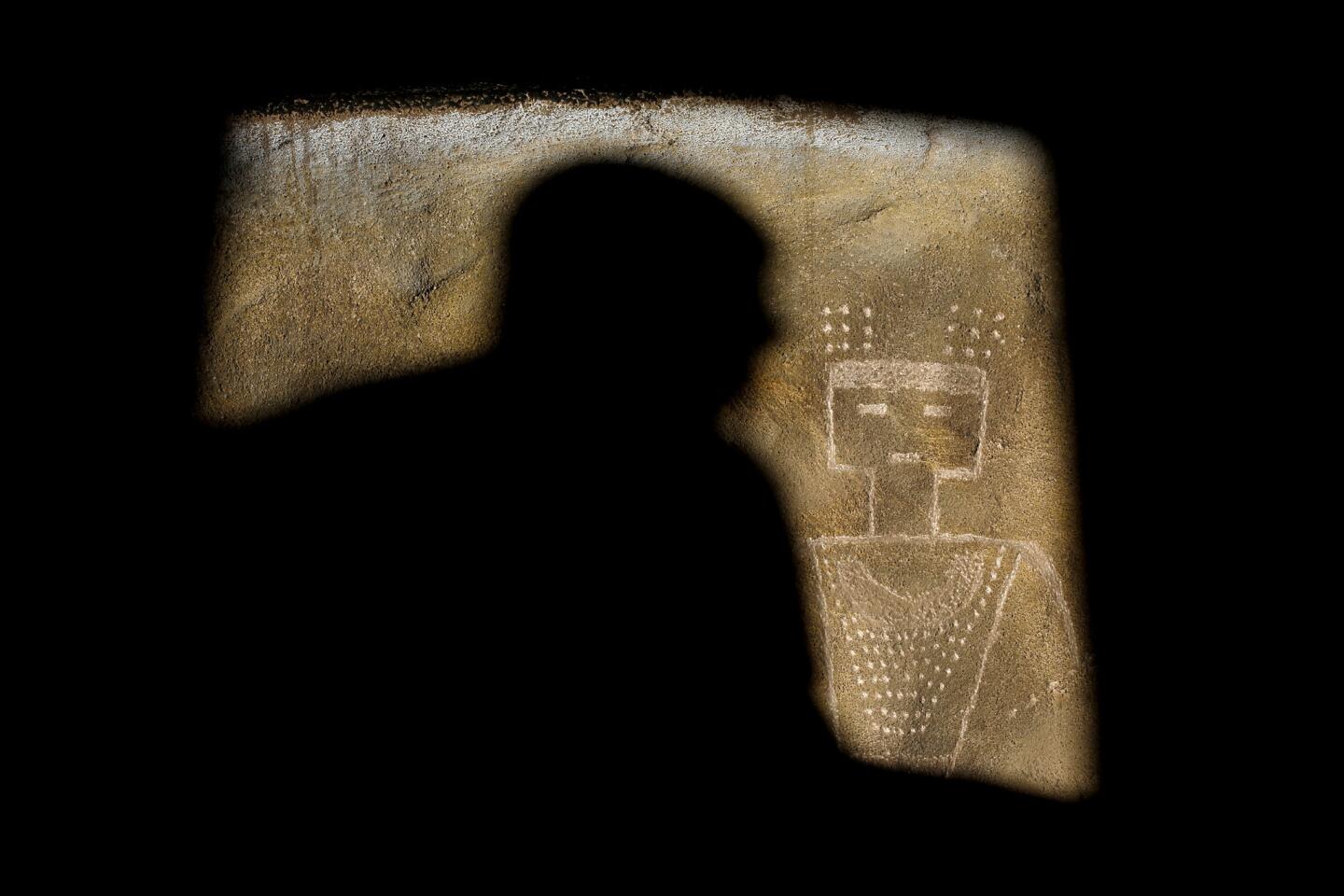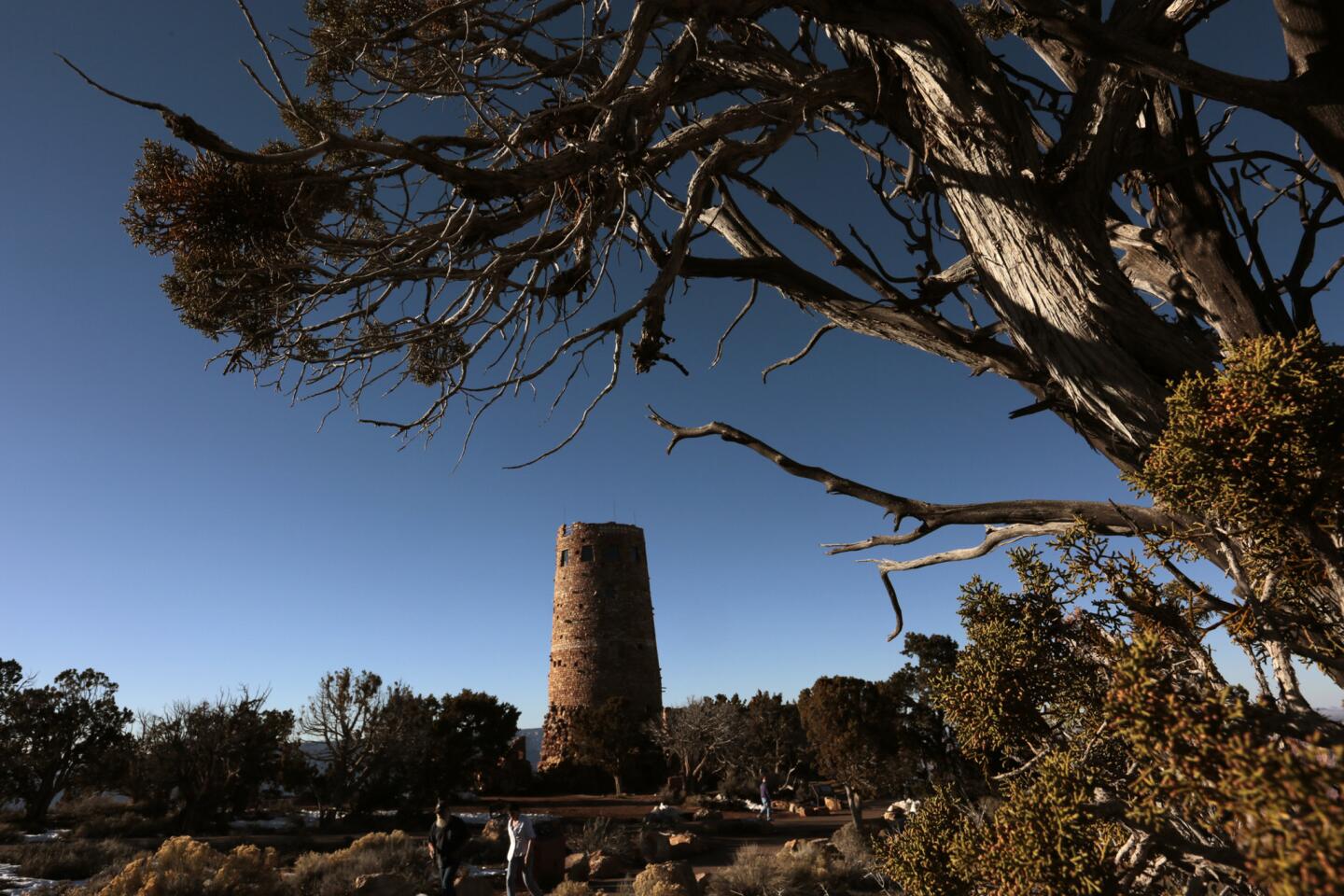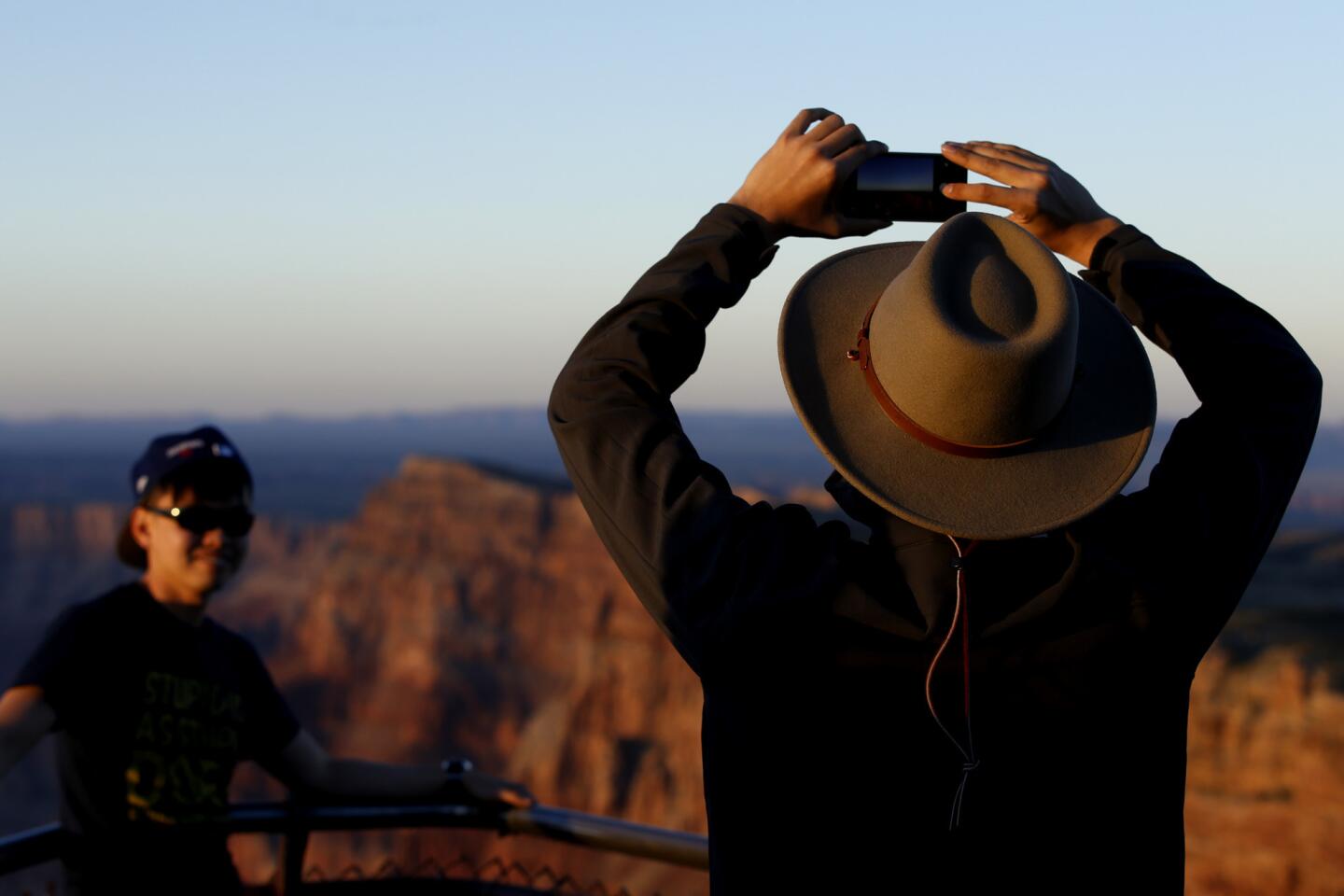Desert View and its faux-ruin tower offer dramatic Grand Canyon vistas
Because it’s 25 miles east of Grand Canyon Village, Desert View isn’t on the park’s shuttle bus routes, and many travelers don’t get there. But it’s a great stop for at least two reasons.
One is the panorama from Desert View Point. As its name suggests, the cross-canyon view from here includes not only dramatic canyon walls but also a flat expanse of desert to the east and, to the north, a stretch of the Colorado River as it trickles and roars between the canyon walls. Bring a picnic lunch — or better yet, a picnic dinner (and a warm coat) and linger while sunset colors wash over the scene. On a clear day, the park service says, you can see 100 miles.
The site’s other principal asset is the tower, which, on first glance, you might mistake for an 800-year-old ruin.
In fact, architect Mary Colter designed it in 1932 as a homage to the ancestral Puebloan people. It’s four stories, a steel-and-concrete skeleton beneath a skin of plaster and stone masonry. The interior is open, the walls decorated with ancient-looking murals. (Hopi artist Fred Kabotie painted many of the works in the Hopi-themed room; others are faux pictographs and petroglyphs.) On the top floor, you’re 7,522 feet above the sea level — the highest point on the South Rim.
We arrived late in the afternoon, with just enough time to check out every floor. Then we lingered on the observation deck above the ground floor, savoring the view until a ranger shooed us away so that he could close for the day.
I didn’t expect to be bowled over by a 70-foot-tall fake Native American building in the middle of so much genuine natural history. But the tower’s circular shape, the wall-hugging stairs and interior play of light won me over. (A major renovation in 2010 helped as well.)
Colter’s design is said to be patterned after ruins at Hovenweep National Monument on Colorado-Utah border and Mesa Verde National Park in Colorado. But it made me think of New York’s Guggenheim Museum. Frank Lloyd Wright, who spent a lot of time in Arizona, began designing that rounded structure (with open interior and walkways along the exterior walls) in 1943.
The Desert View complex also includes a snack bar, market, gas station, visitor center and a seasonal campground.
More to Read
Eat your way across L.A.
Get our weekly Tasting Notes newsletter for reviews, news and more.
You may occasionally receive promotional content from the Los Angeles Times.

